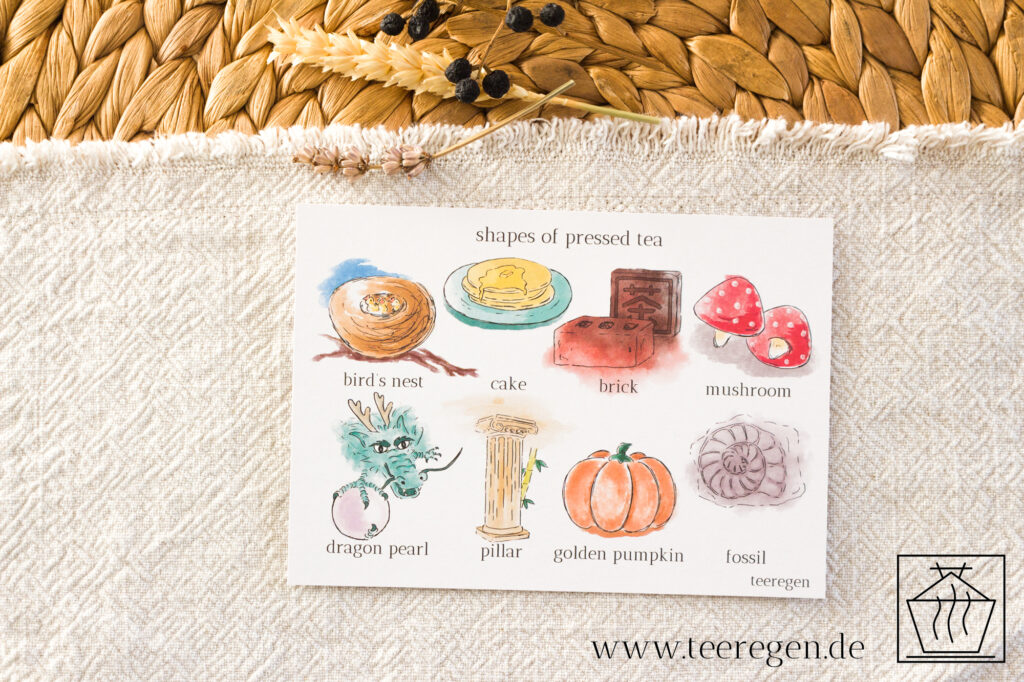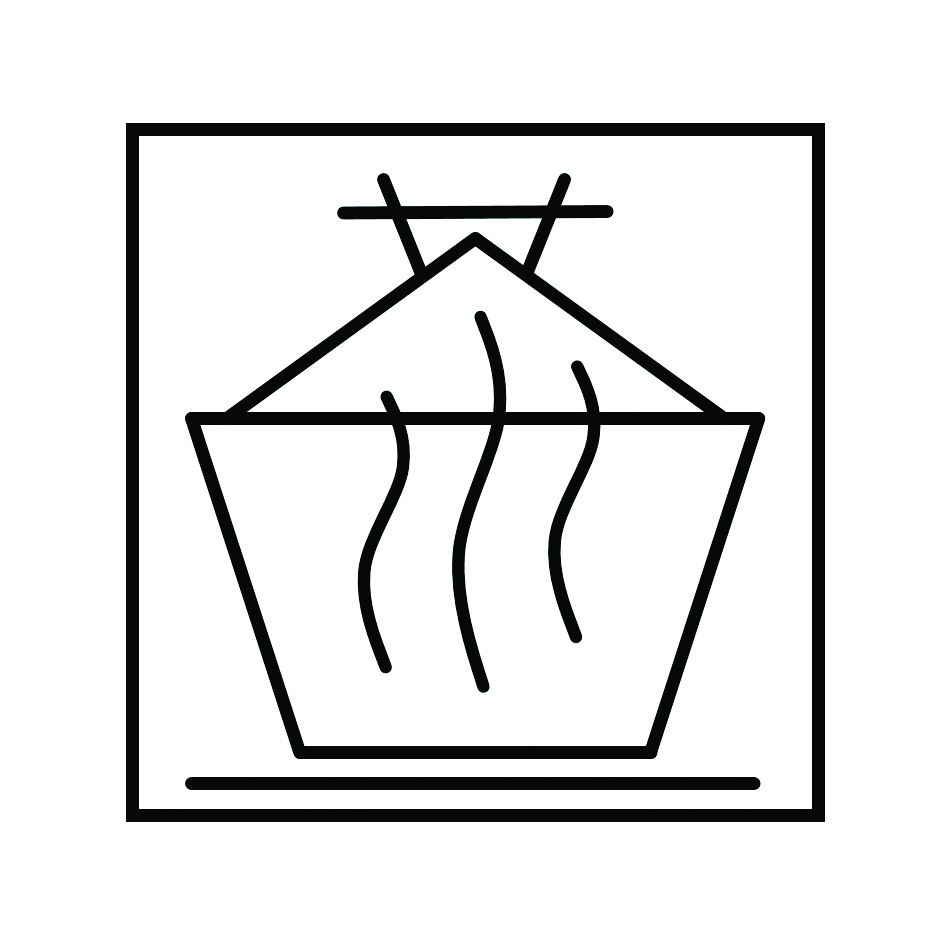Tea comes in all shapes and sizes.

Tea is not only available as loose leaves, but can be pressed for storage or transport. Often, this is done for Pu Er teas, but other types of teas can also be pressed into basically any shape. Here are some of the most popular shapes:
沱茶 tuó chá - bird's nest - this shape was invented in 1902 by tea factory Xiaguan and looks like a bird's nest
饼茶 bǐng chá - cake - the most popular shape, a flat disc with rounded edges. The indentation in the middle of a cake is due to the pressing cloth being tied in that area while the cake is pressed. Tea cakes are often stacked.
砖茶 zhuān chá - brick - brick tea is the most efficient shape for stacking larger quantities of tea, for example as carawan tea. A special form of brick tea is 方茶 fāng chá ("square tea"), a very dense tea, often with commemorative scripture or lucky symbol pressed into the tea.
紧茶 jǐn chá - mushroom - 紧 jǐn means 'tight' or 'tightly pressed'. Sometimes, this tea is also called 蘑菇紧茶 mó gū jǐn chá ('tight mushroom shape'). This shape is associated with teas sold to Tibet.
龙珠 lōng zhū - dragon pearl - these small spheres are gaining popularity fast. They are quite practical: one ball is one serving of tea.
柱茶 zhù chá - pillar - this tea comes in a cylindrical shape wrapped in bamboo strips or pressed into bamboo. To take out the tea leaves, one sometimes has to use drastic measures like a saw.
金瓜 jīn guā - golden pumpkin - the golden pumpkin or golden melon is a round shape segmented by strings. This form was developed in the Qing-Dynasty as a tribute tea from Xishuangbanna.
茶化石 chá huà shí - fossil - a less known tea made from a byproduct of Pu Erh production. There are many terms used interchangeably. The base product is called 老茶头 lăo chá tóu or 疙瘩茶 gē da chá ('nugget tea') and is removed during the standard pu er tea production. They are offered separately or refined to 茶化石 chá huà shí ('tea fossil') or 碎银子 suì yín zi ('brocken silver'). The surface of the tea is dark and oily, almost metallic. The little nuggets can make a lot of infusions of tea.
Get some 'Shapes of Pressed Tea' postcards here!
LY
